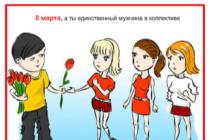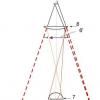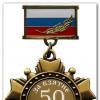SOUTH URAL STATE UNIVERSITY
Faculty of Trade and Economics
Department of Marketing Communications
Coursework in the discipline "PR" on the topic:
« Form style as a PR tool"
Completed:
Checked:
Chelyabinsk
INTRODUCTION 3
CHAPTER 1. FIRM STYLE IN THE STRUCTURE OF THE CORPORATE IMAGE OF THE ENTERPRISE 5
1.1 Corporate identity elements 5
1.2 Main features of corporate identity 12
1.3 Corporate identity as a tool PR 14
CHAPTER 2. ANALYSIS OF THE CORPORATE STYLE AS A PR TOOL OF THE ENTERPRISE OGUP "REGIONAL PHARMACY WAREHOUSE" 16
2.1 Characteristics of the enterprise 16
2.2 Analysis of the corporate identity of OGUP "OAS" 20
2.3 Analysis of the effectiveness of the corporate identity of OGUP "OAS" 22
CONCLUSION 25
REFERENCES 27
Appendix 1 30
Appendix 2 31
INTRODUCTION
Elements of corporate identity have been used in the practice of a market economy since ancient times. These elements were initially primitive. Thus, the most skilled artisans marked their products with a personal (firm) brand. Buyers, aware of the high professional reputation of these artisans, sought to purchase goods with such marks.
Corporate identity is a set of techniques (graphic, color, plastic, acoustic, video) that provide unity to all products of the company and promotional activities; improve the memorability and perception by customers, partners, independent observers not only of the company's products, but also of all its activities. Corporate identity should be memorable and easily recognizable.
The corporate identity contributes to the formation of a favorable image of the company and is designed to enhance the effectiveness of its advertising contacts with consumers, contribute to the growth of the company's reputation and fame in the market, and inspire the trust of partners.
The development and use of your own corporate identity is becoming an increasingly popular attribute of the development strategy of an increasing number of Russian companies. This is due to their increased concern for their corporate image, which largely depends on sustainable and long-term commercial success.
One of the key links in building the company's image is corporate identity, which in a broad sense involves the use of uniform design principles for color combinations and methods for all forms of advertising, documentation, product packaging, office decoration, employee clothing and other components related to the company.
The study of corporate identity in the context of the activities of a PR specialist is necessary for right creation corporate identity and use in any commercial structure.
The purpose of the study is to study the components of creating and promoting corporate identity as a PR tool, to consider the effectiveness of corporate identity on the example of the OGUP "OAS" enterprise.
get acquainted with the essence and content of PR activities at the enterprise OGUP "Regional Pharmacy Warehouse";
consider elements of corporate identity as a component of PR;
form an idea of the stages of preparation and conduct of PR campaigns;
master the basic methods of evaluating the effectiveness of PR activities.
The object of the study is the enterprise OGUP "OAS", the subject of the study is the components of the corporate identity of the enterprise as a PR tool.
When writing a term paper to evaluate the effectiveness of corporate identity components, the following research methods were used - a survey, research methods: questionnaires and interviews.
Course work consists of two sections, introduction, conclusion, bibliographic list and applications. In the introduction, goals, objectives, object and subject of research are formed, its structure is described. The first section is devoted to the analysis of corporate identity components and contains three subsections. The second section contains an analysis of the corporate identity as a PR tool for the enterprise OGUP "Regional Pharmacy Warehouse". This section describes the characteristics of the enterprise and conducted research on the effectiveness of corporate identity. The conclusion contains the main conclusions on term paper. Applications contain tables, figures that were analyzed when writing this work.
CHAPTER 1. FIRM STYLE IN THE STRUCTURE OF THE CORPORATE IMAGE OF THE ENTERPRISE
1.1 Corporate identity elements
A trademark is a duly registered figurative, verbal, three-dimensional, sound designations or their combinations, which are used by the trademark owner to identify their goods. The exclusive right of the owner to use a trademark is provided by legal protection from the state. A trademark is a legal concept and is used only in the legal field. Everything related to a trademark (registration, application, use, protection, sale, etc.) is determined by law, and violation of these provisions entails liability. This designation serves to individualize goods, work performed or services provided to legal entities or individuals.
A trademark (other names used: service mark, trade mark; English trade mark) is a central element of corporate identity. It is not entirely correct to define a trademark as " trademark» .
The main functions of a trademark:
facilitate the perception of differences or create differences;
give names to products;
facilitate product identification;
facilitate the memorization of the product;
indicate the origin of the goods;
provide product information;
stimulate the desire to buy;
symbolize the guarantee.
Trademarks are distinguished by their multiplicity and diversity.
There are five main types of trademarks:
A verbal trademark is characterized by better memorability. It can be registered both in the standard spelling and in the original graphic design (logo). A word mark is the most common type of mark. Approximately 80% of all registered trademarks are of this type. The value of the brand name is so great that the whole direction of branding, called semonemics (Semon - sign and nemeon - to assign), is engaged in the development of the name of the product. Another name for this process is naming.
A figurative trademark is an original drawing, the emblem of the company. For example, a characteristic curved line as a trademark of Nike, which produces sports equipment; a stylized boat inscribed in an oval - AvtoVAZ, etc.
Volumetric - a sign registered in three dimensions, for example, a Coca-Cola bottle of a specific shape, perfume bottles are also provided with legal protection.
The sound trademark in the recent past was characteristic of radio stations and television companies (for example, the introductory measure of the music for the song “Moscow Evenings is a trademark of the Mayak radio station”). IN Lately this species trademark is increasingly being used in advertising practice firms operating in other business areas. For example, original musical phrases may be used in corporate advertising. For example, the signature video clip of instant coffee "Nescafe" by Nestle ("New Day Sip!") contains two registered sound trademarks: the main musical phrase and the rhythmic tapping of a spoon on a cup.
Combined trademarks are a combination of the above types of trademarks, for example, a combination of the logo and the three-dimensional sculptural group "Worker and Collective Farm Woman" by V. Mukhina - a trademark of the Mosfilm film studio.
Analyzing the above definitions of a trademark, we can conclude that a trademark is any specific product or service that has its own name (regardless of whether it is legally registered as a trademark or not). In the perception of the consumer, it acquires a certain meaning. Being a sign that defines a product and a sign in which the image of the product is encoded, the brand combines the product and its image into one whole. That is, it is a "piggy bank" of information about the properties of the product. From this information in the mind of the consumer, the image of the product is formed. A little-known trademark serves only as a name for the product and says almost nothing to the consumer about its properties.
A logo is the original style or abbreviated name of a company, a product group produced by a given company, or one specific product manufactured by it. As a rule, the logo consists of 4-7 letters. Approximately four out of five trademarks are registered in the form of a logo. The logo is a form of trademark and may not contain additional figurative elements (as in the case of Panasonic).
The logo should: be easy to remember, be easily recognizable, be scalable, be able to be placed on various media (booklet, diary, pen, T-shirt, etc.), be unified.
Logos can be conditionally divided into two types: informative logos and abstract logos. An informative logo is a logo that reflects the specifics of the company's activities. It can be illustrative (illustrating the activities of the company), graphic (reflecting the specifics of the business through graphic images), or textual (text describing the activities of the company). Informative logos include "ZiPPO", with its wick and tongue of flame, and "Harley-Davidson" with its "mechanical" spelling. An abstract logo is a logo that only designates a company, but does not carry a sufficient semantic and informative load. Examples of such logos are the "Davidoff" and "NOKIA" logos.
A corporate block is a traditional, often used combination of several corporate identity elements, for example, it may include a brand name or logo, company name, postal, Bank details, list of goods and services, advertising symbol of the company, slogan. It is convenient to use the corporate block as a component in the design of a business card, a business letterhead, on product packaging. The corporate block, most often, is a pictorial trademark and logo, for example, the adidas inscription under the corporate dissected triangle is the Adidas corporate block, the KLM logo with a stylized crown over the letters is the corporate block of the KLM Royal Dutch Airlines. The corporate block may also contain the full official name of the company, its postal and bank details (for example, on letterhead). Sometimes the corporate block includes the corporate slogan.
The trademark and the logo may be identical, the logo may be an integral part of the trademark. A logo can completely take over the functions of a trademark (in this case, a trademark in the form of a wordless drawing cannot be called a logo).
The corporate hero is an important part of the formed image of the company. The communicator, as it were, personifies himself, developing a permanent, stable image of his representative. Very often, the corporate hero is endowed with some traits that the communicator seeks to include in his image. The corporate hero can embody the fantasy-ideal image of the consumer, such as the Marlboro cowboy and the adventurer in a Camel ad. It is assumed that the smoker will identify with these characters. In addition to successful examples of the development of a corporate hero, or at least logical ones, we can recall the failure of IBM in choosing its corporate hero - the Pink Panther from the popular animated series. Now it is already difficult to establish what the specialists of this corporation were guided by when making such a decision. However, by the time the error was discovered, the rights to use the image of the Pink Panther from the Warner Brothers studio had already been purchased, numerous advertising media with this corporate hero were replicated: T-shirts, baseball caps, mouse pads, etc. Naturally, the losses of the communicator as a result of such an error of professionals amounted to many millions. The corporate hero is part of the corporate mythology. Its purpose is to arouse sympathy. The corporate character should visually represent the main idea of the product. The constant communicator, unlike the corporate hero, is a real person. This is a specific person who is chosen by the company as an intermediary in its communication with the addressee. More common definitions of this concept are “face of the company”, “brand image”, “icon of the company”. Sometimes a firm uses the external attractiveness of an intermediary. However, attractive appearance is not the only criterion. In some cases, a firm - communicator may be attracted by the professional qualities of a person, his competence. Then his features are projected onto the image of the owner of the corporate identity.
Send your good work in the knowledge base is simple. Use the form below
Students, graduate students, young scientists who use the knowledge base in their studies and work will be very grateful to you.
Similar Documents
Determining the role of corporate identity in creating a favorable image of the company and theoretical basis its development. Analysis of corporate identity elements of the company: brand name, logo, business card, envelope. Development of an advertising product for the Neva travel agency.
thesis, added 03/05/2011
The concept of corporate identity and its role in creating a favorable image of the company. Study of the process of creating a corporate identity, characteristics of its main stages. Elements of the corporate identity of the cafe "Botanique". Idea and design, naming and creation of a slogan.
thesis, added 02/02/2016
The concept, goals and main elements of corporate identity. The history of the emergence and formation of corporate identity. The main functions of a trademark. Attributes of the business activity of the firm. Stages of development and ways to implement corporate identity in the enterprise.
abstract, added 08/28/2012
The concept, main functions and history of the emergence of corporate identity as a communication marketing technology. Analysis of corporate identity elements, their main carriers, basic selection rules. Features of the development of corporate identity of the company.
term paper, added 11/09/2010
The concept and main elements of corporate identity, the history of its occurrence and the main elements. Rules for the development and design of the corporate identity of the company. Image, trademark, logo, slogan, corporate colors and other corporate identity elements.
test, added 09/25/2014
The concept and significance for the activity of an enterprise of the presence of a corporate identity as a means of forming the company's image, as well as a certain information carrier. Principles and main stages of the formation of the corporate identity of the store, its elements and requirements.
term paper, added 05/12/2014
The concept and development of corporate identity, its role and significance for a travel company. Specific characteristics of services. Problems and trends in the formation of a favorable image of travel companies, brand policy. Elements of corporate identity and its features.
test, added 06/29/2010
Definition of corporate identity and brand. Evaluation of the value of corporate identity in shaping the image of the organization. Analysis of the use of a trademark and corporate identity by one of the leading Belarusian banks, a proposal for its improvement.
term paper, added 10/13/2014
The problems presented in the title of the chapter, at first glance, concern only designers and advertisers, i.e. those specialists who design and produce the basic components of the corporate identity, and then produce and place them on various media.
However, if we take into account what has been said above about planning the corporate context and the system corporate communication, we have to admit that it is they who determine the content of the corporate identity. This does not mean at all that a PR specialist - the creator of a corporate concept - must also become a designer; he just needs to understand the essence and sequence of operations that make up the production of a corporate style and be their constant "ideologists" and controller. The meaning of this control is not to control the hand of the designer, but to ensure that the corporate style is not given to the dominant tastes of one or more, even the most talented, people.
And now - the basic concepts, which, of course, are common to PR specialists, advertisers, and designers.
So, corporate identity is a set of graphic, color, audio and video techniques that ensure the unity of the daily workspace, products and promotional activities of an organization or project, contribute to their recognition, memorization and better perception by employees, partners and consumers, allow you to clearly distinguish your corporate identity. image from the image of competitors.
Corporate identity in the narrow sense is a combination of a trademark, colors and principles of graphic design. business papers; in a broad sense, this is the use of uniform design principles, color combinations and images for all types of advertising, documentation, as well as the maximum number of elements of the surrounding space that are or may be related to an organization or project.
Corporate identity is intended to act as:
a) means of forming an individual and unique image of the organization;
b) an identification system, a certain marker, an information carrier that allows the consumer to find goods and services offered on the market;
c) a tool for the formation of a positive consumer attitude both to the organization or the project as a whole, and to individual goods and services.
Corporate identity is the outer shell of the image (corporate world, total communication system), which is determined by its internal content. A figurative comparison of the image and corporate identity will look something like this: corporate identity is when they “meet by clothes”; a complex corporate design is when "everything should be perfect: clothes, face, and thoughts."
It is worth noting that excessive enthusiasm for corporate identity is no less dangerous than its underestimation, because the process of creating and developing corporate identity has practically no finite framework either in financial costs, or in time, or in space. So, starting with the creation of a simple graphic logo on paper, we, as we light up more and more, can very quickly approach the desire to reproduce its laser image on night clouds. But is it necessary in this moment? Is the game worth the candle?
Of course, there is no standard answer to this question, but the general logic of actions for the creation and development of corporate identity exists.
PR in financial sector
Since the 1990s intensively developing and playing an increasing role in the life of companies, financial PR, called "Investor Relations" (relations with investors). PR activities in the financial sector require simultaneous knowledge of finance and communications. It involves working with the following groups of the public: financial analysts, shareholders, financial journalists, brokers, etc.
Final goal PR in the financial sector - ensuring that the company's shares achieve their market price. A high share price reflects the high value of the company in the eyes of investors, analysts, consultants, etc.
The basis of relations with investors, according to experts, should be based on the information policy of the company, aimed at ensuring the strategic trust of the company on the part of its stakeholders. That is, financial professionals need to understand corporate strategy company, consider it reasonable and meaningful. For example, are the acquisitions or sales of the company well thought out?
Strategic trust develops in the perception of the company's stakeholders (financial analysts, investors, clients, specialized media) based on an understanding of its goals, strategy and the activities resulting from them. Strategic trust is formed on the basis of corporate information - annual reports, transcripts of speeches CEOs to financial analysts and other documents related to the formation of a corporate image and reputation. A very significant factor in strategic trust is the awareness of stakeholders about the company's strategy. Hence the need to provide investors with clear information about the goals, objectives and development strategy of the company. It is necessary that information messages meet the following requirements: openness of information, specificity, timeliness.
The result of strategic trust is improved relations with the financial community and shareholders. An important result is also the improvement of the morale of the company's employees.
Tasks of PR in the financial sector:
Evaluation of opinions about the company, private enterprise or industry as a whole, prevailing among shareholders, financial analysts, legislators, managers of state organizations.
· Assisting management in developing a strategy for interacting with clients, taking into account the goals of the company.
Assistance in the preparation of financial literature:
- letters to new shareholders;
- intermediate and annual reports;
- inserts with information about dividends;
- information for the study of brokerage firms
Organization and supply information materials business meetings on financial matters, tours of the enterprise and presentations to groups of investors, analysts and the financial media.
· Writing materials - financial news for publications in the media; answers to questions from the financially-oriented media.
· Preparing and holding press conferences for financial media.
· Preparation for holding special events: anniversaries, celebrations, etc., involving all representative offices and branches in the regions.
Correspondence with investors also belongs to the functions of PR: often they ask for information about research, stock prices, their own shares, or they want to know the company's point of view on socio-political or moral issues.
The key to financial public relations is the annual report.
The annual report contains not only financial results of the past year. It also covers the impact of the company on the economy of cities, concern for social and economic problems, i.e. annual reports today focus on social significant activities company, its place in society. Another important component of investor relations is the annual meetings.
PR during annual meeting assists in the preparation and conduct, provides journalists with everything necessary, gives the event publicity, prepares lists with possible questions and answers for senior management.
Definition 1
Since the establishment of the enterprise, due attention should be paid to corporate identity, since the name of the company is already its element. Experts advise starting with the creation of a logo or trademark.
The main attention in the development of corporate identity is given to color solutions and images. The purpose of corporate identity is to attract attention. Consumers subconsciously may not remember the name of the product or its manufacturer, and the color of the package or who / what is depicted on it - this is stored in memory. Therefore, in advertising, this is the focus.
The presence of corporate identity allows us to talk about the seriousness and confidence of the company, the high quality of its products and services. Thanks to the corporate identity, the image of the enterprise will also be formed.
Definition 2
important task any commercial organization is to gain confidence in yourself, your products, your brand. This trust is the result of long and hard work. The oversaturation of the market with the same type of goods and services forces companies to create their own corporate identity, different from competitors, in order to be recognizable in the eyes of consumers. At the mention famous brands(Apple, Samsung, Sony, Mersedes, BMW, etc.) consumers should have positive associations and confidence in their reliability, safety and technical superiority.
The use of corporate identity elements to promote products
The corporate style system includes the following elements:
- trademark (or trade mark) - a duly registered designation that is intended to distinguish the goods of this company from the products of other companies;
- logo - a specially designed, original style of the full or abbreviated name of the enterprise (or group of goods);
- corporate block - a sign and logo put together in a composition, as well as various explanatory inscriptions (country, mailing address, telephone and telex);
- corporate color;
- corporate set of fonts.
The main function of identification in the corporate style is the trademark. trademark plays important role when used in ¬ various types advertising: outdoor and transport advertising, TV and radio advertising, press advertising.
There are a number of requirements that a trademark must meet:
- simplicity is a minimum of lines and the presence of large details for quick and accurate memorization;
- individuality is the difference and recognition of the sign;
- attractiveness - the absence of negative emotions and taking into account the feelings and desires of people in different countries;
- Protectability is the official registration of a trademark.
Trademarks can be verbal, figurative, three-dimensional or a combination of all of these types.
The creators of an advertising message and a slogan must draw up a portrait of a potential consumer, be able to put themselves in his place, understand his interests, needs and motives, empathize with him and help eliminate all difficulties and problems.
Remark 1
Psychophysiological bases of corporate style elements perception
The main elements of corporate identity that affect the psycho-emotional state of the consumer are color solutions and the shape of the object.
A person receives a large amount of information through the organs of vision. Color is a conscious visual sensation. In progress visual perception objects are assigned certain colors. At the same time, depending on the psychophysiological state of a person, for example, color perception can be enhanced in dangerous situations or decreases with fatigue.
Color is a key factor in the process of selling goods, as it is involved in making a purchase decision. It evokes emotions in the buyer, prompting them to purchase a particular product. Therefore, the main task of advertisers is to find a suitable color that will evoke the necessary emotions and desire to buy.
Color not only evokes certain emotions in a person, but also affects these emotions. With the help of color solutions, you can control the consumer's attitude to advertising and evoke certain emotions in him.
Color semantics is actively used in the development of advertising messages. The choice of color depends on the type of product, contingent target audience, the intended result of applying a specific color.
Red, blue and yellow are the primary colors in advertising. If you mix these three colors, you can get a completely different color or shade.
Form, like color, affects a person from an emotional point of view. Best of all, simple geometric shapes are perceived and remembered by a person: a circle, a square, a rectangle, etc. Line shapes also have a certain impact on the perception of information by the target audience.
Remark 2
SOUTH URAL STATE UNIVERSITY
Faculty of Trade and Economics
Department of Marketing Communications
Coursework in the discipline "PR" on the topic:
"Corporate style as a PR tool"
- Completed:
- Checked:
2011
TABLE OF CONTENTS
INTRODUCTION
Elements of corporate identity have been used in the practice of a market economy since ancient times. These elements were initially primitive. Thus, the most skilled artisans marked their products with a personal (firm) brand. Buyers, aware of the high professional reputation of these artisans, sought to purchase goods with such marks.Form style - this is a set of techniques (graphic, color, plastic, acoustic, video) that provide unity to all products of the company and promotional activities; improve the memorability and perception by customers, partners, independent observers not only of the company's products, but also of all its activities. Corporate identity should be memorable and easily recognizable.
The corporate identity contributes to the formation of a favorable image of the company and is designed to enhance the effectiveness of its advertising contacts with consumers, contribute to the growth of the company's reputation and fame in the market, and inspire the trust of partners.
The development and use of your own corporate identity is becoming an increasingly popular attribute of the development strategy of an increasing number of Russian companies. This is due to their increased concern for their corporate image, which largely depends on sustainable and long-term commercial success.
One of the key links in building the company's image is corporate identity, which in a broad sense involves the use of uniform design principles for color combinations and methods for all forms of advertising, documentation, product packaging, office decoration, employee clothing and other components related to the company.
The study of corporate identity in the context of the activities of a PR specialist is necessary for the correct creation of corporate identity and use in any commercial structure.
The purpose of the study is to study the components of creating and promoting corporate identity as a PR tool, to consider the effectiveness of corporate identity on the example of the OGUP "OAS" enterprise.
Tasks:
- get acquainted with the essence and content of PR activities at the enterprise OGUP "Regional Pharmacy Warehouse";
consider elements of corporate identity as a component of PR;
form an idea of the stages of preparation and conduct of PR campaigns;
master the basic methods of evaluating the effectiveness of PR activities.
When writing a term paper to evaluate the effectiveness of corporate identity components, the following research methods were used - a survey, research methods: questionnaires and interviews.
Course work consists of two sections, introduction, conclusion, bibliographic list and applications. In the introduction, goals, objectives, object and subject of research are formed, its structure is described. The first section is devoted to the analysis of corporate identity components and contains three subsections. The second section contains an analysis of the corporate identity as a PR tool for the enterprise OGUP "Regional Pharmacy Warehouse". This section describes the characteristics of the enterprise and conducted research on the effectiveness of corporate identity. The conclusion contains the main conclusions on the course work. Applications contain tables, figures that were analyzed when writing this work.
CHAPTER 1. FIRM STYLE IN THE STRUCTURE OF THE CORPORATE IMAGE OF THE ENTERPRISE
1.1 Corporate identity elementsA trademark is a duly registered figurative, verbal, three-dimensional, sound designations or their combinations, which are used by the trademark owner to identify their goods. The exclusive right of the owner to use a trademark is provided by legal protection from the state. A trademark is a legal concept and is used only in the legal field. Everything related to a trademark (registration, application, use, protection, sale, etc.) is determined by law, and violation of these provisions entails liability. This designation serves to individualize goods, work performed or services provided to legal entities or individuals.
A trademark (other names used: service mark, trade mark; English trade mark) is a central element of corporate identity. The definition of a trademark as a "trademark" is not entirely correct.
The main functions of a trademark:
- facilitate the perception of differences or create differences;
give names to products;
facilitate product identification;
facilitate the memorization of the product;
indicate the origin of the goods;
provide product information;
stimulate the desire to buy;
symbolize the guarantee.
There are five main types of trademarks:
- A verbal trademark is characterized by better memorability. It can be registered both in the standard spelling and in the original graphic design (logo). A word mark is the most common type of mark. Approximately 80% of all registered trademarks are of this type. The value of the brand name is so great that the whole direction of branding, called semonemics (Semon - sign and nemeon - to assign), is engaged in the development of the name of the product. Another name for this process is naming.
A figurative trademark is an original drawing, the emblem of the company. For example, a characteristic curved line as a trademark of Nike, which produces sports equipment; a stylized boat inscribed in an oval - AvtoVAZ, etc.
Volumetric - a sign registered in three dimensions, for example, a Coca-Cola bottle of a specific shape, perfume bottles are also provided with legal protection.
The sound trademark in the recent past was characteristic of radio stations and television companies (for example, the introductory measure of the music for the song “Moscow Evenings is a trademark of the Mayak radio station”). Recently, this type of trademark is increasingly used in the advertising practice of firms operating in other areas of business. For example, original musical phrases may be used in corporate advertising. For example, the signature video clip of instant coffee "Nescafe" by Nestle ("New Day Sip!") contains two registered sound trademarks: the main musical phrase and the rhythmic tapping of a spoon on a cup.
Combined trademarks are a combination of the above types of trademarks, for example, a combination of the logo and the three-dimensional sculptural group "Worker and Collective Farm Woman" by V. Mukhina - a trademark of the Mosfilm film studio.
A logo is the original style or abbreviated name of a company, a product group produced by a given company, or one specific product manufactured by it. As a rule, the logo consists of 4-7 letters. Approximately four out of five trademarks are registered in the form of a logo. The logo is a form of trademark and may not contain additional figurative elements (as in the case of Panasonic).
The logo should: be easy to remember, be easily recognizable, be scalable, be able to be placed on various media (booklet, diary, pen, T-shirt, etc.), be unified.
Logos can be conditionally divided into two types: informative logos and abstract logos. An informative logo is a logo that reflects the specifics of the company's activities. It can be illustrative (illustrating the activities of the company), graphic (reflecting the specifics of the business through graphic images), or textual (text describing the activities of the company). Informative logos include "ZiPPO", with its wick and tongue of flame, and "Harley-Davidson" with its "mechanical" spelling. An abstract logo is a logo that only designates a company, but does not carry a sufficient semantic and informative load. Examples of such logos are the "Davidoff" and "NOKIA" logos.
Brand block is a traditional, frequently used combination of several elements of corporate identity, for example, it may include a brand name or logo, company name, postal, bank details, a list of goods and services, a company advertising symbol, a slogan. It is convenient to use the corporate block as a component in the design of a business card, a business letterhead, on product packaging. The corporate block, most often, is a pictorial trademark and logo, for example, the adidas inscription under the corporate dissected triangle is the Adidas corporate block, the KLM logo with a stylized crown over the letters is the corporate block of the KLM Royal Dutch Airlines. The corporate block may also contain the full official name of the company, its postal and bank details (for example, on letterhead). Sometimes the corporate block includes the corporate slogan.
The trademark and the logo may be identical, the logo may be an integral part of the trademark. A logo can completely take over the functions of a trademark (in this case, a trademark in the form of a wordless drawing cannot be called a logo).
The corporate hero is an important part of the formed image of the company. The communicator, as it were, personifies himself, developing a permanent, stable image of his representative. Very often, the corporate hero is endowed with some traits that the communicator seeks to include in his image. The corporate hero can embody the fantasy-ideal image of the consumer, such as the Marlboro cowboy and the adventurer in a Camel ad. It is assumed that the smoker will identify with these characters. In addition to successful examples of the development of a corporate hero, or at least logical ones, we can recall the failure of IBM in choosing its corporate hero - the Pink Panther from the popular animated series. Now it is already difficult to establish what the specialists of this corporation were guided by when making such a decision. However, by the time the error was discovered, the rights to use the image of the Pink Panther from the Warner Brothers studio had already been purchased, numerous advertising media with this corporate hero were replicated: T-shirts, baseball caps, mouse pads, etc. Naturally, the losses of the communicator as a result of such an error of professionals amounted to many millions. The corporate hero is part of the corporate mythology. Its purpose is to arouse sympathy. The corporate character should visually represent the main idea of the product. The constant communicator, unlike the corporate hero, is a real person. This is a specific person who is chosen by the company as an intermediary in its communication with the addressee. More common definitions of this concept are “face of the company”, “brand image”, “icon of the company”. Sometimes a firm uses the external attractiveness of an intermediary. However, attractive appearance is not the only criterion. In some cases, a firm - communicator may be attracted by the professional qualities of a person, his competence. Then his features are projected onto the image of the owner of the corporate identity.
The image is a very visual and capacious form of information presentation. A person easily operates with visual images. Characteristically, on average, color accounts for about 80% of the information contained in the image. Emotional perception of color is closely related to biological processes in the human body. Colors of different wavelengths have different effects on the nervous system. Warm colors (red, orange) have a longer wavelength, so more effort is required from the human eye and brain to process it. The associated increase in metabolism causes the body to feel uplifted. Short wavelength colors (blue, green, purple) require less energy to process, which has a calming effect. The psychological characteristics of color are closely related to the cultural experience of a person. For example, in Christian culture, black is associated with death and mourning. The main task of a designer when developing a corporate identity is to choose a color combination that most fully corresponds to the goals and ideology of the company. The same applies to the fonts that will be used in the design of corporate identity elements and subsequent promotional materials. The concepts and moods conveyed by a typeface affect the different groups of people. The task of the designer is to evoke the maximum response from the target audience of the customer using the forms of a certain font. Corporate colors are the colors used by the company in the style of its representative documents and create the color scheme of its visual image. Each color pulls a trail of possible associations. Therefore, the use of a corporate color is a powerful psychological means of organizing the perception, thinking and behavior of the consumer. The choice of color is important not only to attract attention. This is a way by which you can manage the emotions of the consumer, create in him a favorable idea of a product or service and arouse a desire to purchase it. A significant psychological role is played by the constancy of the color accompaniment of a given product or service. This allows the consumer to easily remember the brand they like and distinguish it from others. When choosing a color, it is advisable not only to take into account the specifics of a product or service, but also to focus, as far as possible, on the color preferences of target consumer groups. So, for example, women are more impressed by soft, delicate tones and color combinations. Men are attracted to sharper and more contrasting colors.
Corporate color is the most important element of corporate identity. Color makes the elements of corporate identity more attractive, better remembered, and allows you to have a strong emotional impact. For some types of products and services, specific colors are firmly entrenched, for example, the concept of "aviation" is associated with silver, crop production and its products - with green. The most famous examples of the use of corporate colors are "Beeline" - a combination of black and yellow; Euroset - bright yellow color.
A corporate color may also have legal protection in the event of a corresponding trademark registration in this color. However, it must be taken into account that if a trademark is in a color version, then only in this color it will be protected. When registering a trademark in black and white, it is protected when reproduced in any color.
A corporate set of fonts can emphasize various features of the brand image, contribute to the formation of a corporate identity. A font can be perceived as “masculine” or “feminine”, “light” or “heavy”, “elegant” or “rough”, “business”, etc. The task of corporate identity developers is to find “their own” font that would fit into the image of the brand. There are many types of fonts, which are conditionally divided into large groups: Latin, chopped, oblique, ornamented, and others. Font groups include a large number of typefaces that differ in style, width, saturation, and so on. Fonts can imitate Old Church Slavonic, Greek, cuneiform, hieroglyphic writing, cursive lettering, children's handwriting, etc. .
Thus, it is possible to formulate the following requirements for a corporate font: it must be easy to read, it must correspond to the psychological design and target audience, it must correspond to the specifics of the company's activities. As well as to the corporate color, the consumer gets used to the corporate font. Therefore, it should not be changed.
Additional elements:
- corporate slogan (slogan);
a branded website that matches the style;
branded stylish packaging;
letterhead, envelope;
business card design;
layout scheme;
various advertising, souvenir products, etc.
1.2 Main features of corporate identity
According to N.S. Dobrobabenko’s definition, “corporate style is a set of techniques that provide a single image for all company products and events; improving the consumer's perception and memorability not only of the company's products, but also of all its activities; as well as allowing you to contrast your products and activities with the products and activities of competitors.
Among the main functions of corporate identity are:
- Identification. Corporate identity allows the consumer to effortlessly recognize desired product(company, service) according to some external features.
Confidence. If the consumer is once convinced of the quality of products (services), then this trust will largely extend to all other products of the company. In addition, the presence of a corporate identity in itself inspires confidence.
Advertising. The presence of a corporate identity significantly increases the effectiveness of advertising. In addition, all objects containing elements of the corporate identity of the company are themselves advertising.
Corporate identity provides the organization with the following benefits, performing the following functions:
- promotion corporate spirit, the unity of employees and the creation of a sense of belonging to a common cause, brings up corporate patriotism;
positive impact on the aesthetic level, appearance of goods and premises of the company;
help the consumer navigate the flow of advertising information, quickly and accurately find the right company;
indicates to the consumer that the firm takes responsibility for the product produced;
indicates to society the stability and long-term operation of the company;
reduces advertising and PR costs while enhancing its impact and building a strong brand .
1.3 Corporate identity as a PR tool
Hundreds of design and advertising agencies. However, it is important not only to develop, but also to correctly convey the corporate identity to society, to ensure its consolidation in the minds of the target audience of the company, otherwise the desired effect will not be achieved.
In the broadest sense, communication tools for promoting the corporate identity of the company may include the following initiatives: presentations and press conferences, distribution of press releases and press kits, direct mailing, production of videos and commercials, implementation of PR and advertising campaigns, production of printing and souvenir products companies, holding special events, participation in exhibitions, etc. - that is, everything without which it is difficult to imagine the promotion of the company itself. Corporate identity is an integral part of the company's image, and therefore the development of a communication campaign to promote the corporate identity of the organization should be carried out taking into account the entire strategy of forming the company's image.
There are two typical situations when organizations resort to the use of corporate identity. The first and most common is corporate identity as an integral part of the company's image when it is created. The second is renaming the company or rebranding. It also includes adding new values to the company's existing brand.
The beginning of the company's work is the most responsible time, because during this period its image is laid. Customers and partners will judge the company by the quality of paperwork, design of logos, website and advertising brochures, clothing of employees, so you should not save on the quality of corporate identity development and means for its implementation. The second important point, which is also worth immediately paying attention to, is ensuring strict and constant observance of the corporate identity by all employees of the company. In the decision this issue internal orders, seminars for staff, as well as mandatory instruction in this regard for all new employees, can help.
There are situations when the company's clients place on their website or in their advertising brochure a self-made logo that imitates the brand identity of the partner company. Such situations need to be monitored and stopped immediately, as this may negatively affect the company's reputation. In this case, it is necessary to place in the advertising booklet and on the company's website a message stating that the company logo is patented and can only be used with the consent of the relevant company structures (public relations department of the organization).
The standard corporate branding activities for an organization include the following:
- distribution of the order on compliance with the corporate identity;
conducting internal seminars on corporate identity;
registration of the company's office in corporate style;
production in the corporate style of clothing for employees employed in production or in the company's stores;
registration of door plates and signboards of the company in corporate style;
applying corporate identity elements to the company's products;
production of souvenirs with elements of the company's corporate identity;
production of advertising and printing products with elements of the company's corporate identity;
outdoor advertising with elements of the company's corporate identity;
advertising in the media with elements of the corporate identity of the company;
website with corporate identity elements of the company;
use of corporate identity while participating in conferences and exhibitions, holding special events.
After analyzing the elements and functions of corporate identity, we can draw the following conclusion for the first chapter: corporate identity is a unity of permanent visual and textual elements that identify belonging to a particular company and distinguish it from competitors. A set of color, graphic, verbal elements provides visual and semantic unity of goods and services, all information coming from the company, its internal and external design. Corporate identity is the basis of the company's communication policy. Each company strives to individualize, show itself as something new in the market and attract the attention of customers, investors and new consumers. Corporate identity contributes to the achievement of these goals. Ideas about the company are formed on the basis of visual sensations that capture information about the interior and exterior of the office, trading and showrooms, the appearance of the staff, and the corporate identity of the organization. Corporate identity and PR, therefore, are closely interconnected, as they work for one goal - to form public opinion.
Chapter 2
2.1 Characteristics of the enterpriseThe Provincial Pharmacy Warehouse was founded in 1919. It was a relatively small enterprise. The pharmacy service received its development with the foundation in 1923 of the trading company of the Provincial trade in medical property (Gubmedtorg), and in 1924 - the Chelyabinsk branch of the Uralmedtorg joint-stock company. Uralmedtorg united 7 pharmacies, pharmacy stores, a provincial pharmacy warehouse and a pharmaceutical plant.
In 1938, a reorganization was carried out, the Central Pharmacy Warehouse was formed with an independent balance and with direct subordination to the regional branch of the GAPU (Main Pharmacy Department).
In 1992, the Regional Pharmacy Warehouse was renamed into the State Enterprise "Regional Pharmacy Warehouse", registered by the Decree of the Head of the Administration of the Soviet District of the City of Chelyabinsk dated December 29, 1992 No. 2259.
etc.................














